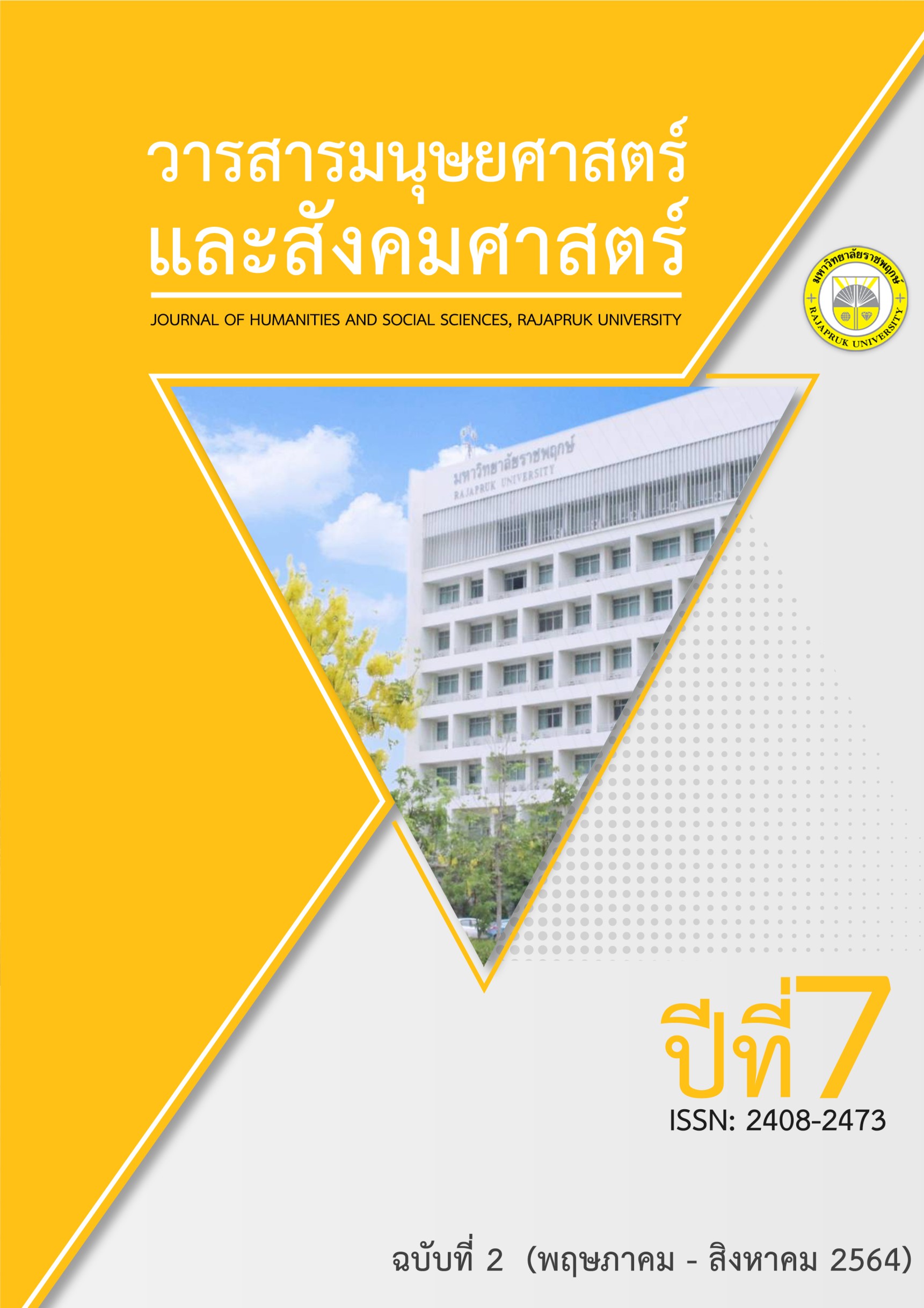Operation of the School which Passed Evaluation as a Moral School under the Nonthaburi Primary Educational Service Area Office 1
Main Article Content
Abstract
This research aimed to compare the performance of schools that were assessed as moral school under Nonthaburi Primary Educational Service Area Office 1, classified by gender, age, work experience, highest level of education and presented a guideline for promoting the operation of moral school under the Nonthaburi Primary Educational Service Area Office 1. The sample group was the 248 teachers in the school are assessed as a school of morality. This research instrument was a 5-level questionnaire with individual IOC values between 0.67-1.00 and the Cronbach’s alpha coefficient is 0.95. The data were analyzed, such as frequency, percentage, mean, Standard Deviation (SD), t-t and One-Way ANOVA.
The research results were found that: The performance of the school that was assessed as a moral school under the Nonthaburi Primary Educational Service Area Office 1 in overall and each of the four aspects was at a high level. They were sorted by average as follows: Executives had the highest mean, followed by teachers, schools and students respectively. The results of the comparison of moral school of schools under the Nonthaburi Primary Educational Service Area Office 1 were classified by gender, age, work experience and the highest level of education. There was no difference in opinions and the highest level of education, except age. There were statistically significant differences of opinions at the .05 level. Guidelines for promoting operations as follows: 1) The schools should simplify assessment of projects and was budget and time. 2) The administrators should plan a driven approach that starts with administrators and then passes on to teachers and educational personnel to be successful and then expands the results to learners. 3) Teachers should study activities and projects to understand in order to achieve their objectives and benefits 4) Students should encourage the implementation of activities according to the project guidelines to cultivate morality. By allowing students to practice as part of their daily life so as not to cause an additional workload.
Article Details
References
จักรี วงศ์อักษร. (2562). ประสิทธิผลการดาเนินงานโรงเรียนคุณธรรม สพฐ.สังกัดสำนักงานเขตพื้นที่การศึกษามัธยมศึกษา เขต 23.วิทยานิพนธ์ครุศาสตรมหาบัณฑิต สาขาวิชาการบริหารการศึกษา คณะครุศาสตร์ มหาวิทยาลัยราชภัฏสกลนคร.
จันทรานี สงวนนาม. (2551). ทฤษฎีและแนวปฏิบัติในการบริหารสถานศึกษา. พิมพ์ครั้งที่ 2. กรุงเทพฯ: บุ๊ค พ้อยท์.
รัชทิตา เชยกลิ่น. (2553). บทบาทผู้บริหารกับการส่งเสริมคุณธรรมจริยธรรมของโรงเรียนคุณธรรมชั้นนำสำนักงานเขตพื้นที่การศึกษากรุงเทพมหานคร เขต 1. ปริญญามหาบัณฑิตมหาวิทยาลัยมหาจุฬาลงกรณ์ราชวิทยาลัย.
ลัดดาวัลย์ เพชรโรจน์ และ คณะ. (2555). สถิติสำหรับการวิจัยและเทคนิคการใช้ SPSS. กรุงเทพฯ. เจริญดีมั่นคงการพิมพ์.
สำนักงานเขตพื้นที่การศึกษามัธยมศึกษา เขต 17. (2561). ปัจจัยที่มีผลต่อความสำเร็จของการดำเนินงานโรงเรียนคุณธรรม สพฐ. ของเขตตรวจราชการที่ 9. กรุงเทพฯ.
สำนักงานคณะกรรมการการศึกษาขั้นพื้นฐาน. (2560). คู่มือการสัมมนาการพัฒนานวัตกรรมสำหรับโรงเรียนวิถีพุทธพระราชทาน รุ่น 2. กรุงเทพฯ: กระทรวงศึกษาธิการ.
สำนักงานเลขาธิการสภาการศึกษา. (2560). แผนการศึกษาชาติ พ.ศ. 2560-2579. บริษัท พริกหวานกราฟฟิค. สำนักงานเลขาธิการสภาการศึกษา.
สำนักงานเลขาธิการสภาผู้แทนราษฎร. (2560). รัฐธรรมนูญแห่งราชอาณาจักรไทย. สำนักการพิมพ์ สำนักงานเลขาธิการสภาผู้แทนราษฎร.
สุรวุฒิ จันทนะโสตถิ์. (2552). การศึกษาปัญหาการบริหารงานส่งเสริมคุณธรรม จริยธรรมนักเรียน ตามโครงการโรงเรียนวิถีพุทธในสถานศึกษาสังกัดสำนักงานเขตพื้นที่การศึกษาราชบุรี เขต 2. วิทยานิพนธ์ครุศาสตรมหาบัณฑิต. มหาวิทยาลัยราชภัฏหมู่บ้านจอมบึง.
Butt, Marty. (1993). What do superintendents do to turn vision into action a biography of pragmatic visionaries. Dissertation Abstracts International.
Linda T Sheive; Marian B Schoenheit. (1987). work life education leaders. Leadership: Examining the elusive. Yearbook of the association for supervision and curriculum development.


